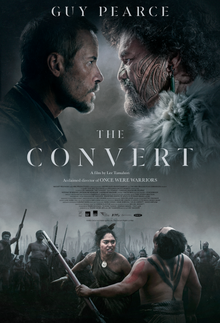
Now streaming on:
Music, we are told, makes the people come together. Music, it so happens, makes the bourgeoisie and the rebel…okay, I’ll stop.
But what, really, is the, or are the, function or functions or capability or capabilities of music? By simply using the word as the title for her new motion picture, writer/director Angela Schanelec invites the questions. In her vision, the answers are more allegorical than practical. Her picture is an exquisitely constructed cinematic work that functions more like an ever-shifting visual and aural sculpture than a narrative. It is a daring and assured subversion of conventional film language that will likely infuriate certain viewers and reward others.
The opening view shows fog encroaching on the woods of a mountainside. Human figures move on it, dimly seen. The screen goes black. The soundtrack features terrible sobbing, giving the impression of a woman experiencing childbirth. There’s another mountainside, another human figure on it. There’s a well-composed view of a stone hut. Someone emerges carrying a baby. There’s an old dusty ambulance that takes the baby and its carrier away.
There’s not much dialogue. Some characters emerge. Jon, always wearing a shirt that’s red in color. He’s played by Aliocha Schneider, a performer from Canada. Hanging out one day, a fellow late teenager attempts to kiss him, and Jon pushes him away; we then see the teenager splattered in blood, dead. Some sterile interiors suggest a prison. There Jon is working with a woman who seems some years older than him, Iro. She’s portrayed by the well-respected French actress Agathe Bonitzer. (Her father, Pascal Bonitzer, is an actor and director, and the screenwriter of several Jacques Rivette classics, including “La Belle Noiseuse,” none of which are as difficult as your average Schanelec film.)
On the soundtrack, we hear Vivaldi’s “Filiae Maestae Jerusalem,” as well as Handel and Falconieri. Not much is seen to actually happen. The frames are composed in ways that bring to mind Bresson (closeups of hands), Straub and Huillet (characters stand impassively, forming human friezes), and other high-art minimalist filmmakers. A potentially catastrophic car mishap is portrayed in a way that brings to mind Godard’s breakthrough 1980 film “Sauve qui peut (La Vie).”
While Jon’s life is seen to progress, and he is shown to begin making music — some aspects of the highly fragmented story suggest Oedipus, while others make one think of Orpheus — there are no real “characterizations” here; no one expresses or explains themselves, they merely are. Their actions, even the most dire, are depicted calmly, with near-deity-like equanimity. After a meticulous and evocative sequence of shots, a living body goes off a cliff; in the next shot, a young child runs down a road, and a hearse drives up that road. Later, outside a recording studio, Jon looks at his mobile phone (throughout the movie, the cars and the home technology evolve from clunky 1980s-style units to fully contemporary objects) and says, “Google News.” His companion looks at Jon’s screen and says, “He’s dead.”
The phenomenological world is all we are presented here, even though the film's concerns aspire to the metaphysical. As Jon’s music career yields unusual fruit, his eyesight worsens (here we are to recall the self-blinding of Oedipus) “Why have an eye if not to see?” a character asks. As for the music itself, the first original song (the material is composed by Doug Tielli, a Canadian singer/songwriter) sounds like a cheerier, bluesier Nick Drake tune; the second song is something wholly other, but all the songs fit under the rubric of dreamy art pop. This is somewhat at odds with the movie’s otherwise austere aesthetic, which adds more intrigue to the inquiry.
Glenn Kenny was the chief film critic of Premiere magazine for almost half of its existence. He has written for a host of other publications and resides in Brooklyn. Read his answers to our Movie Love Questionnaire here.







108 minutes
Aliocha Schneider as Jon
Agathe Bonitzer as Iro
Marissa Triantafyllidou as Merope
Argyris Xafis as Elias